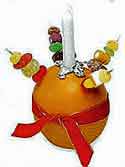 St Mary's Church, Dymock
St Mary's Church, Dymock
| Admin | |||
| . | Home | Contents | |
| H&S Policy | People Safety | Grave Yard | |
The Church & The World
Faith & Care
Faith & Care
Things Past
People & Features
People & Features
Seasons and Festivals

As well as the Seasons and Major Festivals which help us worship God, the church celebrates several 'Special Days' throughout the year to remember, honour and support each other and our work in God's world. Celebration of the "Special Days" is usually optional, Christians chose which they want to remember, not all churches celebrate all these days....
'Special Days'
| January | Plough Sunday | May | Christian Aid Week | September | Racial Justice Sunday Harvest Festival |
| February | Education Sunday | June | Fathers Day Reader Sunday |
October | Disability Sunday Animal Welfare Sunday Hospital Sunday |
| March | Mothering Sunday | July | Sea Sunday | November | All Saints Day,
All Souls Day Remembrance Sunday |
| April | Rogation | August | . | December | Nine Lessons and Carols Christingle Service |

A Christingle
The Church of England Children's Society adopted the idea in 1968 as a way to communicate the Christian message in an understandable way.
In the modern Christingle Service: The orange represents the world. The lighted candle represents Jesus, the Light of the World who showed us God's love. The red ribbon round the orange is a symbol of the blood of Jesus which was shed for our sins and is also a symbol of forgiveness. The dried fruit and sweets represent the four seasons of Spring, Summer, Autumn and Winter and the fruits of the earth of young people. (Some say the four points of the compass of North, East, South and West to represent the good things the world provides).
Christingle Services are frequently held in schools as well as in churches, either just before or just after Christmas. A typical Service will include the singing of Christmas Carols, an informal talk, possibly a presentation or play by some of the Children, distribution of the Christingles, lighting of the candles, and a collection - usually either for a local charity or for the work of the Church of England Children's Society.
(Return to Top)